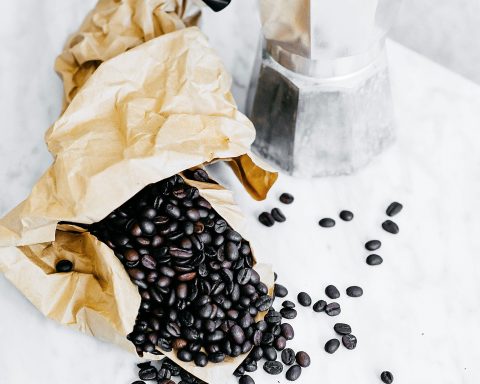Located in South-eastern Asia bordering the Gulf of Thailand, the Kingdom of Cambodia is a constitutional monarchy. The Royal Cambodian Government was formed in 1993 on the basis of UN-sponsored elections that were internationally recognised as free and fair. It is located in between Thailand, Vietnam and Laos. Cambodia established full diplomatic relationship with the US after the formation of the freely-elected royal Government.
The Cambodian Diaspora is one of the most vibrant ethno-cultural diasporas in the region. The number of overseas nationals outside Cambodia has been estimated at between 2.2 and 4.5 million, making the Cambodian diaspora the largest in South-east Asia with a population comparable with those of Malaysia, Thailand, and Singapore combined.
Cambodia is a member of ASEAN. The country has achieved several developmental goals: poverty has been reduced from 60% (of the population) in 1993 to only 5% in 2006, life expectancy was between 49–51 years in 1990 but increased to 65 years in 2006, primary school enrollment rose from 70% in 1991 to almost 100%, 61% of the population was both economically and socially active and per capita income rose from $US 55 in 1991 to $US 470 in 2015 when adjusted for inflation.
Business Etiqutte
Cambodian Business culture is Asian. The local business culture is similar to surrounding nations in the region. Western business dress codes are accepted, but when in Cambodia, you are expected to respect local dress rules and customs. Business hours are from 9am to 5pm.
A handshake is the traditional way of greeting and is the method of showing respect to the other person. When shaking hands, do not use both hands. When greeting, be sure to stand up and take your hat off when you see a Cambodian person. This local custom is considered a sign of respect. If invited to a Cambodian home for an event, you will be expected to pay homage to the Cambodian Buddha image located in Cambodian houses.
A Cambodian personal name consists of a given name, middle name and family name, in that order. Using Western names, such as the first 2 names, is common. The given name is usually the name of a family ancestor. Children are generally referred to as ‘phon-sin’ or ‘phon-ssin’ which are considered affectionate terms. The eldest son of a family is ‘keo-seav’. Women’s names are suffixed with either ‘day’ or ‘yang’.
The Cambodian calendar consists of 365 days instead of the usual 365.25 days. The word, ‘khmer’ is derived from the Sanskrit khemarata or khemaratam, which means the ‘land of the Khmer’. The word ‘khmer’ was also used during the Angkor period to refer to a powerful ruler, such as a king or emperor.
The Khmer people are predominantly Buddhist. Buddhism is the most important religion in the country. There are many pagodas in Cambodia. One in Anlong Veng is said to be the largest in the world.
The Khmer language is the official language throughout the country. The Khmer alphabet contains 44 consonants and 8 vowels. The Khmer language is unique to the country and is not related to the Thai, Japanese, Burmese or Vietnamese languages.
Common expressions in Cambodia are:
- ‘vat ak srei’ – which means ‘Welcome’
- ‘kum sawalum’ – which means ‘Please’
- ‘kum sriboun’ – which means ‘Please come in’
- ‘siiha touv’ – which means ‘thank you’
- ‘pum vong’ – which means ‘cheers’
The word, ‘bon-nang’ describes an auspicious almanac date. It means that if your birthday falls on a ‘bon-nang’, there will be good luck and good things will befall you.
Cambodia has a 7-day week, while business days are Monday to Friday of every week. Although each day has a name, Koreans and the Chinese names are used more frequently.
The Cambodian people still believe in looking to the future by using lucky numbers. The Chinese belief that luck numbers change every year, while the luck or lucky numbers for the year began on February 4.
The business card should be written in Khmer, or English or Thai, with the company name, position, phone number and email address and parents’ names, if applicable. Business cards should be presented with both hands and a polite bow. Remember to keep in mind that Cambodians greet face-to-face with both hands and maintain eye contact. Business cards should never be given with the left hand.
There is a wide range of Cambodian cuisine available. In Sihanoukville, there are different types of seafood, including octopus. There are many types of dishes available. One of the most popular local dishes is Amok, which is a coconut cream chicken curry. Another popular local dish is Stuffed Crab in coconut cream. Another popular dish is Coconut Fish. Another popular locally-produced dish is a Khmer-style Fried Rice with a local variety of egg.
When eating together, a local custom is to place a plate on your lower right hand side of the table and to fill it with fresh fruit, vegetables and herbs to share with everyone at the table. Another custom is to keep your wrists and ankles together when you eat.
In Sihanoukvile, the local delicacy is fresh crayfish. All over the country, the selection of local shakes, such as galangal, papaya or mango are refreshing and nutritious.
Western-style chairs and tables are seen in all business establishments.
Smart-casual attire is recommended in Cambodia. Female business attire should be conservative and corporate style. Men should wear long-sleeved shirts and suit pants. Hats are not necessary.
Business Etiquette – Conclusion
In conclusion, there has been much written about the history of Cambodia and many articles have been written about international business etiquette. I hope that this article was both interesting to read and a pleasant piece of writing.






